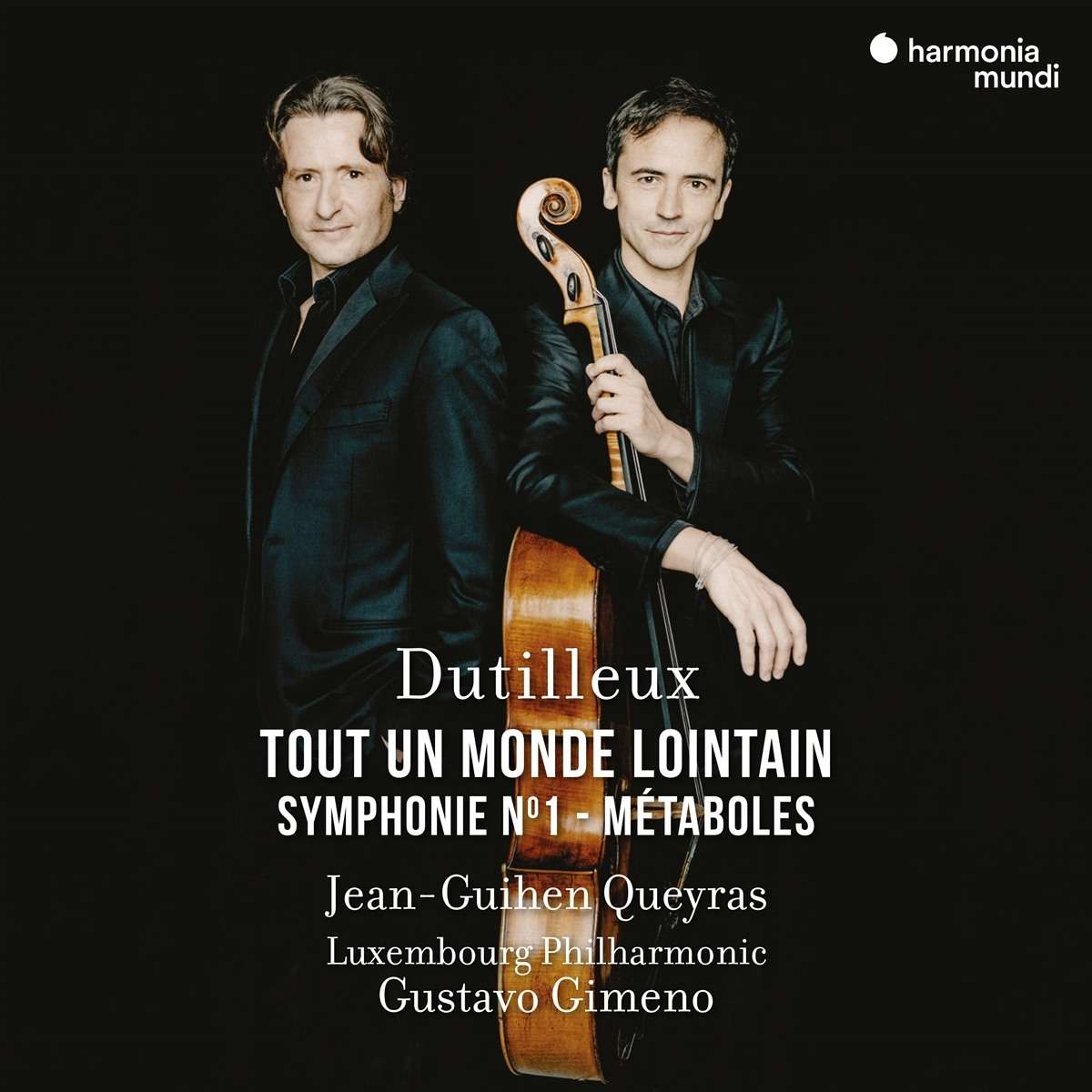Die erste Symphonie als erstes reines Orchesterwerk zeigt im Intermezzo das von Henri Dutilleux genutzte Prinzip des progressiven Wachstums. Damit ist besagt, dass sich ein Thema erst im Laufe eines Satzes allmählich entwickelt. Auch die Passacaglia als Eröffnungssatz zeugt von seinem eigenständigen Weg außerhalb jeglicher Schulen.
Ebenso eine unmerkliche Veränderung, eigentlich chemisch die Verwandlung eines Elements in etwas anderes, meint Metaboles. Dutilleux verwendete ihn in Abgrenzung zu dem bereits in der Musik belegten Begriff Metamorphosen.
Das Cellokonzert Tout un monde lointain entstand sozusagen als Übersprungshandlung nach einem fehlgeschlagenen Auftrag für eine Ballettmusik. Darin bewohnt Dutilleux die gleiche Fantasiewelt wie die Poesie von Charles Baudelaire, die in der Entstehung einwirkte.
Zunächst darf man dem technischen Team der Aufnahme höchstes Lob zollen, da sie einen gebundenen Ensembleklang eingefangen haben und trotzdem eine exzellente Durchhörbarkeit für alle Instrumente gewährleistet wird, so dass jedes Detail wahrnehmbar bleibt.
Diese analytische Sicht findet sich auch im Spiel des Luxembourg Philharmonic unter der Leitung seines Chefs Gustavo Gimeno. Damit gelingt es ihnen, die den Werken immanenten Strukturen deutlich herauszustellen. Ob solistische Einwürfe oder orchestrale Passagen, alle Episoden werden bestens organisiert dargestellt.
Beim Cellokonzert kommt Jean-Guihen Queyras als Solist hinzu. Er folgt beim seiner Interpretation den Ideen des Komponisten. Dutilleux hatte den Fokus auf die Phantasie und die Poesie gelegt und nicht etwa auf virtuose Bravour um ihrer selbst willen gelegt. Dabei werden insbesondere die höchsten Register des Instruments häufig gefordert. Queyras ist ein so erfahrener und versierter Cellist, dass er diese Anforderungen mit leichter Hand sicher und ausdrucksstark bewältigt. Queyras weiß sowohl die tiefe Nachdenklichkeit des vorletzten Satzes, Miroirs, mit intimem Zugang zu zeigen wie er auch den rhythmisch und robust geprägten Schlusssatz, Hymne, mit eloquentem Spiel hervorzuheben weiß. Die das Werk abschließende Schlusskadenz, antivirtuos mit verhauchenden Abschluss gestaltet, bietet Queyras die Möglichkeit, die Intensität seines Spiels einzusetzen, um trotzdem die Spannung bis zum Ende zu halten.
As the first purely orchestral work, the first symphony shows in the Intermezzo the principle of progressive growth used by Henri Dutilleux. This means that a theme only develops gradually over the course of a movement. The Passacaglia as the opening movement also testifies to his independent path outside of any school.
Metaboles also refers to an imperceptible change, actually the chemical transformation of one element into something else. Dutilleux used it to distinguish it from the term metamorphoses, which was already used in music.
The cello concerto Tout un monde lointain was written, so to speak, as a skip after a failed commission for ballet music. In it, Dutilleux inhabits the same fantasy world as the poetry of Charles Baudelaire, which had an influence on its creation.
First of all, the technical team of the recording deserves the highest praise, as they have captured a tight ensemble sound and yet ensured excellent audibility for all instruments, so that every detail remains perceptible.
This analytical approach is also evident in the playing of the Luxembourg Philharmonic under the direction of its conductor Gustavo Gimeno. This enables them to clearly emphasize the inherent structures of the works. Whether soloistic interjections or orchestral passages, all episodes are presented in the best possible way.
Jean-Guihen Queyras joins in the cello concerto as soloist. He follows the composer’s ideas in his interpretation. Dutilleux had placed the focus on imagination and poetry and not on virtuoso bravura for its own sake. The highest registers of the instrument in particular are frequently called upon. Queyras is such an experienced and accomplished cellist that he masters these demands with a light hand, confidently and expressively. Queyras knows how to show the deep thoughtfulness of the penultimate movement, Miroirs, with an intimate approach, as well as how to emphasize the rhythmically and robustly shaped final movement, Hymne, with eloquent playing. The final cadenza, which concludes the work in an anti-virtuosic manner with a breathy ending, offers Queyras the opportunity to use the intensity of his playing to maintain the tension until the end.




















